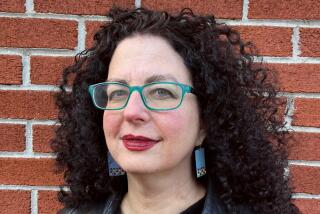TV REVIEWS : Predatory TV Reporter in Jeopardy
Writer Laura Lamson regards television as “the religion of the ‘90s,” an electronic confessional in which everyone blabs everything in front of the camera.
Hence, the public mea culpas in “Calling the Shots,” Lamson’s BBC whodunit starring Lynn Redgrave as a driven female journalist whose forceful brand of reporting backfires with frightening consequences, at once victimizing her and enlightening her. The message: With scoops comes responsibility.
The three-part “Masterpiece Theatre” offering arrives at 9 p.m. Sunday on KCET-TV Channel 28 and KPBS-TV Channel 15, and 8 p.m. on KVCR-TV Channel 24.
Just why PBS feels “Calling the Shots” is more suited to “Masterpiece Theatre” than to its “Mystery!” series is mysterious, given that the spine of Lamson’s teleplay is the riddle. Yet despite bravura work by Redgrave and suspenseful direction by Ross Devenish, “Calling the Shots” largely flops on a script level because the catalyst driving its mystery--a jolting twist that concludes Part 1--is a plot hole gaping enough to drive a fleet of news vans through. That comes when there is an illogical absence of publicity or talk about a human tragedy, a silence that Redgrave’s character, a tough, skeptical, veteran muckraker named Maggie Donnelly, inexplicably never even wonders about. Picking up on this plot discrepancy destroys the mystery.
But not all of the enjoyment, happily.
Ordered by her London network news boss to widen her audience by softening her stories, Donnelly reluctantly pursues a yuppie singles fitness feature, but in the process inadvertently tapes a man punching a woman on a dance floor. When the woman is later savagely beaten and raped by that man, Donnelly bullies her into telling her story on camera and then uses unethical TV tactics to nail the assailant as well. But almost immediately, her big coup turns nightmare when she becomes the target of a campaign of terror that transforms “Calling the Shots” into an unbroken ribbon of suspense. Even if you do suspect who’s behind it.
In perhaps her most unglamorous role since arriving on the scene 27 years ago in “Georgy Girl,” Redgrave is a sagging mask of dread and suffering as a strong, determined, divorced grandmother whose life comes under the close, brutalizing control and scrutiny of a spying, unseen, unknown tormentor. At times snappish, arrogant and flash-tempered, Donnelly joins another British import, Helen Mirren’s flawed London cop Jane Tennison of “Prime Suspect 2,” atop the 1992-93 list of television’s most compelling female characters.
There is more to Donnelly than fear and career. She’s distressed by demons from her past, and her compassionate side shines in her relationship with a cancer-weakened boyfriend. Yet her blemishes--an affinity for predatory journalism and not looking back after callously exploiting her subjects for the sake of a story--are Lamson’s vehicle for exploring issues facing contemporary media.
“Near news” is what fill-in host Linda Ellerbee calls the hyperbolic, tabloidesque, re-enactment-scarred reporting that returns to haunt Donnelly in “Calling the Shots.” Near mystery describes the script.
More to Read
The complete guide to home viewing
Get Screen Gab for everything about the TV shows and streaming movies everyone’s talking about.
You may occasionally receive promotional content from the Los Angeles Times.






